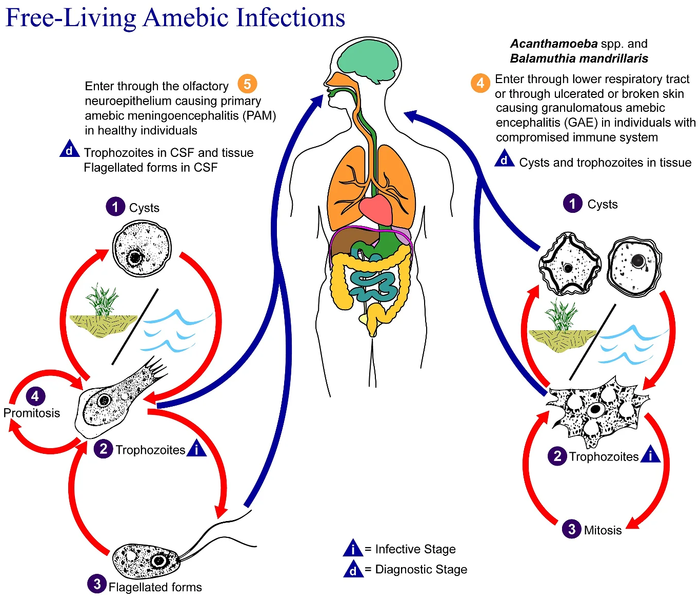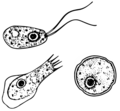File:Free-living amebic infections.png

Dimension de iste previsualisation: 700 × 600 pixels.Altere resolutiones: 280 × 240 pixels | 560 × 480 pixels | 896 × 768 pixels | 1 195 × 1 024 pixels | 1 365 × 1 170 pixels.
File original (1 365 × 1 170 pixels, dimension del file: 715 KB, typo MIME: image/png)
Historia del file
Clicca sur un data/hora pro vider le file como appareva a ille tempore.
| Data/Hora | Miniatura | Dimensiones | Usator | Commento | |
|---|---|---|---|---|---|
| actual | 09:24, 2 februario 2023 |  | 1 365 × 1 170 (715 KB) | Materialscientist | https://answersingenesis.org/biology/microbiology/the-genesis-of-brain-eating-amoeba/ |
| 06:30, 20 julio 2008 |  | 518 × 435 (31 KB) | Optigan13 | {{Information |Description={{en|This is an illustration of the life cycle of the parasitic agents responsible for causing “free-living” amebic infections. For a complete description of the life cycle of these parasites, select the link below the image |
Uso de iste file
Il non ha paginas que usa iste file.
Uso global de iste file
Le altere wikis sequente usa iste imagine:
- Uso in de.wikibooks.org
- Uso in en.wiktionary.org
- Uso in fi.wikipedia.org
- Uso in fr.wikipedia.org
- Uso in gl.wikipedia.org
- Uso in hr.wikipedia.org
- Uso in is.wikipedia.org
- Uso in it.wikipedia.org
- Uso in pl.wikipedia.org
- Uso in te.wikipedia.org
- Uso in vi.wikipedia.org
- Uso in www.wikidata.org
- Uso in zh.wikipedia.org




